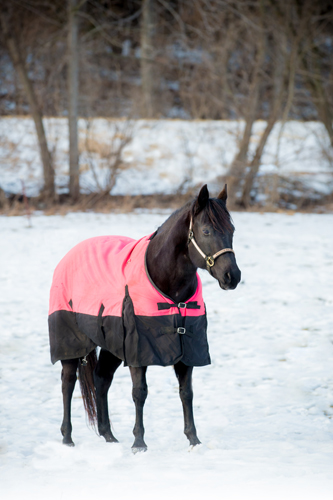 As the cold winter air grips much of the nation, knowing how to best blanket your horse is an essential part in the quest to maintain a slick and shiny, ready-to- show hair coat and take good care of horses kept at home.
As the cold winter air grips much of the nation, knowing how to best blanket your horse is an essential part in the quest to maintain a slick and shiny, ready-to- show hair coat and take good care of horses kept at home.
We asked blanket manufacturers to share tips on how to best blanket show horses and discuss some new trends they notice in the industry. Plus, Halter and performance trainers share their blanketing practices and preferences.
Finding the right fit and style
An active horseman for many years, Glenn Drake owner of Big D products, says the idea for developing his own line of blankets came about from experiencing troubles with poorly constructed blankets that would not stay upright on a horse over 45 years ago.
“I was determined to construct a blanket that would not twist or turn on a horse,” he said. “We still use the same high grade nylon and our blankets have style fit as we have always used. Sometimes I feel as though we are reinventing the wheel.”
Big D based in Fairfield, California, offers many styles of blankets, sheets, turnouts and hoods. They also offer fly sheets as a warmer weather option.
“You want a blanket that is made of good quality material that is fitting to the horse,” Drake said. “Our insulated blankets have a coat liner that is actually designed to help the hair lay flat. The woven liner absorbs the body’s heat while still allowing the material to breathe for less sweating.”
Through the years with his own horse experiences, Drake has found proper blanketing coupled with sixteen hours a day lighting are the best practices for a slick coat year round.
“Blankets that fit correctly are not only more comfortable for the horse but they last longer too. Horses are less likely to get them off or want to rub,” he explained. “Big D blankets fit 96 percent of all horses if measured right. We allow an 3/4 edge for a little looser fit so the horse has a little room to move. If a blanket is properly fitted only the tail should be exposed.”
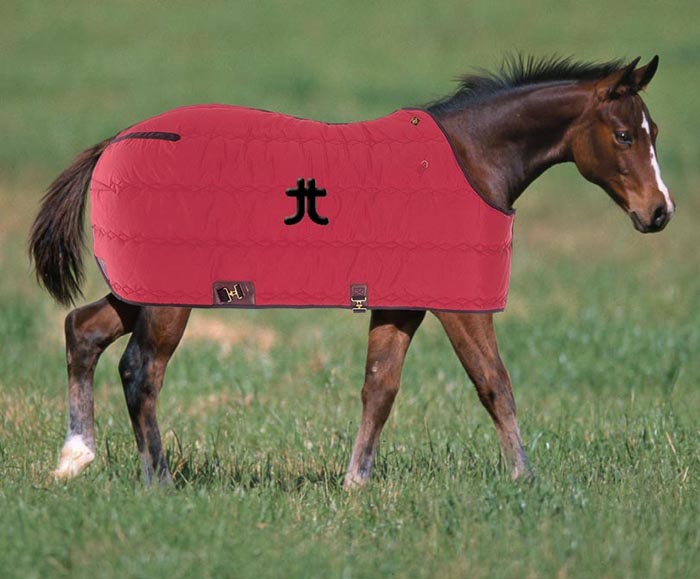 When measuring for a proper fit, pull out your measuring tape and have a friend hold it at the center of your horse’s chest. Then, run the cloth tape around the widest part of the shoulder down his side to the tail reading in inches. In addition to the actual fit, Drake stresses the importance of properly adjusting the blanket’s leg straps, which should have about six inches of slack in them to allow for the horse’s movement.
When measuring for a proper fit, pull out your measuring tape and have a friend hold it at the center of your horse’s chest. Then, run the cloth tape around the widest part of the shoulder down his side to the tail reading in inches. In addition to the actual fit, Drake stresses the importance of properly adjusting the blanket’s leg straps, which should have about six inches of slack in them to allow for the horse’s movement.
“Most of the time people tend to think their horse is bigger than it actually is” he said. ” Get a blanket first and foremost that fits correctly! If you have a young horse, you will need to watch how they grow and change your blankets accordingly.”
Schneider’s Saddlery, a third-generation family owned business which was founded in 1948 by Milt Schneider based in Chagrin Falls, Ohio manufacturers a Stormshield® Waterproof Breathable Turnout Blanket and Adjusta-Fit® Stable blankets for horses, miniatures, ponies, foals and draft breeds. Within those brands, they carry heavyweight, mid-weight, lightweight and sheets with several different outer shell materials from the basic to the very rugged according to Leigh Winters of Schneider’s Marketing department.
“We pride ourselves in offering the best fit-holding Patents on our V-Free® Pressure-Free Wither and our Adjusta-Fit® System. In young, growing or narrow horses this feature can be extremely useful,” she said. “Durability is another factor in our success. In our stable blanket line we offer 420D nylon and 1,200D super quilt outer shells and in our turnout blankets we offer a wide range of materials from 600D to 1680 Ballistic Nylon. We believe that fit and durability go hand in hand.”
Schneider’s blanket line offers five different fits: V- Free®, Cutback, VTEK®) Wither Relief, Contour Collar Euro and Extra Coverage as Winters explains not every horse is going to wear what the next one does. She suggests that customers consider their horse’s breed, age, purpose and average temperature of their location when deciding which stable blanket or turnout best suits.
 “If a blanket fits and is comfortable for the horse to wear they are less likely to be agitated and scratch or rub on walls,” she explained. “For fastening options, we offer leg strap, belly band and crisscross surcingle as well as close-front (pull over the head) and open-front versions.”
“If a blanket fits and is comfortable for the horse to wear they are less likely to be agitated and scratch or rub on walls,” she explained. “For fastening options, we offer leg strap, belly band and crisscross surcingle as well as close-front (pull over the head) and open-front versions.”
Winters said she feels that, over the years, waterproof turnout blankets have gained the most in popularity.
“They are extremely versatile and can transition from an outdoor turnout blanket to an indoor stable blanket. Turnout, in a sense, eliminates the need to re-blanket when you bring your horse inside. Plus, turnouts (in general) are made with tougher outer shells,” she explained. “However, a stable blanket is still the perfect scenario for people who don’t blanket their horse for turnout.”
Style Stable Products in Brownton, Minnesota have been manufacturing blankets for 35 years. While they offer several blanket and sheet style types Shannon Wacker says their company works close with their customers on a one-on-one basis to discuss their needs and produce the best item for them.
“Individual preference is huge in choosing which style of blanket to buy,” she said. “We offer people the ease of our Style Stable Original Belly Wrap Blanket; easy on and easy off. Others may love Style Stable Custom Leg Strap Sheets with optional open fronts for working with colts and large horses that are too big to put over their heads. Others like the option of styling their own with belly wraps, custom leg straps and personal colors/monogramming to fit their own needs- it simply is an individual preference.”
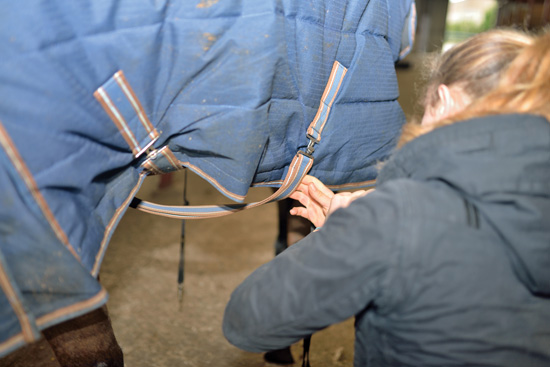 Care and maintenance
Care and maintenance
Wacker recommends keeping your blanket clean and well stored for a longer lasting product.
“General washing and care will help maintain the life of all the blankets, sheets and products we manufacture,” she said. “The stall front bag has helped many people cut their horse show laundry down by keeping things nice and neat when not in use. Machine wash in cold setting is best and we suggest air drying.”
When it comes to washing your blankets, Winters suggests not using regular clothing detergent.
“The clothing detergent we use is too harsh and will degrade the materials and strip the waterproofing from turnouts. We recommend a mild soap that is formulated for technical and waterproof fabrics. We offer our own Schneider’s Blanket Wash,” she said. “Don’t over launder! Over-washing is the worst thing you can do especially for a waterproof item. Every time you wash a turnout blanket you decrease the life of the waterproofing.”
Winters only advises laundering blankets one or two times per season. In addition, she suggests storing your blankets in a cool, dry place where rodents cannot bother them during the off-season.
“For waterproof turnouts, we don’t recommend you spray them with a re-proofer unless you know you have a problem already,” she explained. “Waterproofing will last longer if you leave it alone.”
Glenn Drake has had some customers have the same Big D blanket for as long as 10 years and says his products do have a long life expectancy if they are taken care of properly.
“Keep them clean and wash them but don’t put them in the dryer,” he said. ” We recommend to drip dry your products.”
 When to use which blanket
When to use which blanket
First and foremost, Winters explains that all insulation and outer coverings across blanket manufacturers are not equal.
“One company’s mid-weight will not equal another so company to company blanket standards are different. You have to do your research and know what you’re getting,” she said.
As far as Schneider’s blankets go, Winters says a guide their company follows is: heavyweight blanket range 0 to 30 degrees F, a mid-weight 30 to 50 degrees F, lightweight 50 to 60 degrees F and a sheet 60 plus degrees.
“Blanket liners are useful as an additional layer of warmth underneath a blanket for a short-term cold snap,” she said. “Our liners come in lightweight and mid-weight options and are ideal as a layering piece because they are designed to connect to our blankets by the leg strap.”
For Drake one of the biggest mistakes that he has seen customers make through the years is over-blanketing their horses.
“People tend to over-blanket and then the horses will sweat underneath,” he said. ” Sweating is one of the worst things you can do for a good hair coat not to mention it is not good for the horse either.”
A good rule of thumb Drake always tells his Big D customers to go by is to consider the temperature outside and how you are going to dress yourself for the day.
“Horses have close to same blood temperature as humans with an extra coat of hair so if you are comfortable in a light weight jacket than your horse needs a light blanket and if you are reaching for a heavier coat than your horse needs a heavier blanket too,” he said. “I recommend that our customers have a couple sets of blankets and because our turnouts are very warm I do not recommend them for inside as much as our stable blankets that breathe better where the horses are less likely to get hot.”
When it comes to new blanketing trends in the industry, Winters says the Schneider’s products have seen a shift toward heavier outer deniers (tougher materials) being purchased more frequently than ever before.
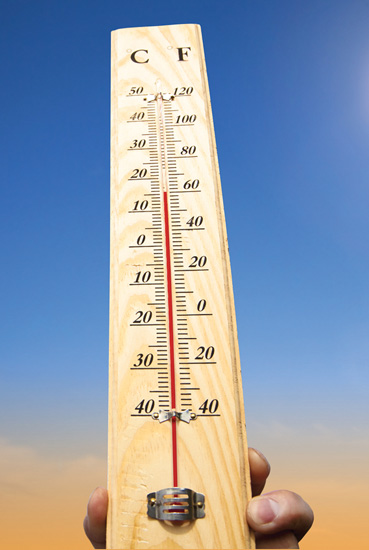
“The heavier the denier the more durable and getting something that is going to last is really important,” she said. “We are also seeing a shift toward neck covers rather than hoods. We rely on our customers’ feedback; some of our best blanket ideas have come from listening to our customers through our customer service department and at shows.”
According to Shannon Wacker, Style Stable has seen a huge increase in the production of their custom line.
“Customers love the versatility of colors and options of neck styles for a truly custom fit,” she says. “We offer trainers the ease of sending customers to us for their custom look. We offer personal consultation of colors, trims and different styles and options for all pieces.”
Along with their custom line, a new trend Wacker has really seen take off is the use of custom stall front bags and neck warmers.
“The custom stall front bags are huge in popularity!” she said. “They enable you to store all your horse clothing in one place while keeping it clean when not in use. After you use one you are addicted! We have also noticed a huge increase in neck warmers. We get a lot of requests for them.”
Similarly, Glenn Drake says Big D too has seen an increase in their custom line orders. With many new colors available, he has seen many trainers customizing their own unique style.
“There have been a lot of advances in colors of material, piping and monogramming. Many customers are now getting matching everything from blankets to saddle bags,” he said. “Our Weatherproof Breathable Turnout blankets have had an increase in demand as well. Turnouts are a new trend that I have seen really grow through the years.”
Trainers: Preferences and practices
All- Around Performance trainer, Torey Roderick of Seekonk, Massachusetts says she prefers Big D or Schneider’s sheets and blankets because of the cut.
” They rarely turn or twist on the horses compared to other brands we’ve tried,” she says. ” I prefer a nylon sheet to cotton or other blends because I think it keeps their coats better and the sheets themselves stay cleaner.”
When it gets cool outside, Roderick will often work her horses with hoods on to keep their body temperature warmer without getting them sweaty.
“If it’s cold at a show, we sometimes longe in hoods but pull them right away after longing and put a cooler or even two on them if it’s cold,” she said. “When hauling from cold to warm temperatures, I sometimes haul in hoods but don’t fasten so we can pull them off if the weather warms up.”
Roderick suggests to not only consider the temperature but also the degree of humidity in the air before deciding what blankets to put on your horse.
“The temperature is a factor but humidity is also a key factor. I like to feel the air before I decide about layers,” she said. “We try to keep the horses as warm as they can be before breaking into a sweat. They can be fine at night check say around 9 or 10 o’clock but then as a closed barn warms up they might develop a sweat between midnight and 3 a.m. These are toughest ones for me. If they run cold we just keep layering but the hot blooded ones are the challenge.”
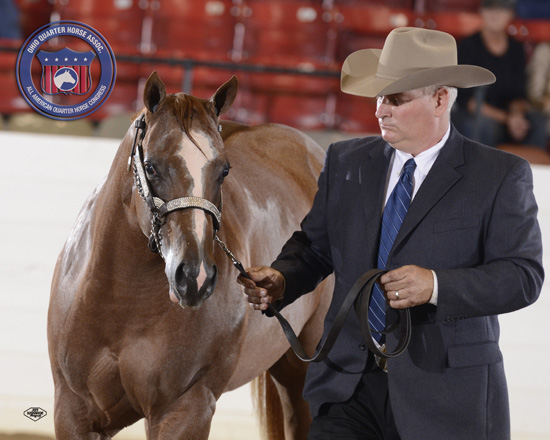
Mitch Leonarski
Halter trainer, Mitch Leonarski of Williamstown, New Jersey, is an expert on keeping hot-blooded horses with perfect hair coats.
“Halter horses have a different body type than riding horses,” he said. “I find them to be much hotter blooded and more likely to break into a sweat. Sweating is the worst thing you can do for a hair coat plus when horses are too hot they tend to get sick, fret and be just uncomfortable. I would much rather have my horses just a tick cooler than have them break out in a sweat.”
Leonarski generally uses the Schneider’s sheets and blankets and prefers the closed front blankets to the buckle fronts.
“I find the closed front sheets to have a more natural fit and have had less trouble with horses being able to get out of them,” he says. “Since I work with a lot of babies and young horses, I like the idea of pulling the sheets over their heads because it does help in getting them broker faster by just getting them used to something different.”
At home he has a heated barn, which he keeps at about 66 degrees and at this temperature he keeps a sheet on his horses. When the warmer weather comes and his barn gets over 70 he takes the sheets off.
“At shows I typically will use two sheets instead of blankets when the temperature gets down under 60 with a slinky and if it gets colder yet I will add a blanket liner on top,” he explained. “I make sure to pack the trailer before a show with enough sheets, liners and hoods for all the horses that I am taking so I am ready for however the weather may change.”
When hauling in cooler temperatures, Leonarski would prefer to haul with sheets on but he keeps a constant watch on the temperature outside and the changes it makes throughout the trip.
“I think the sheets do keep their hair laid down better but you have to consider the temperature inside the trailer because just the body heat from the horses with a full trailer will keep it much warmer inside,” he said. “I check my horses regularly and will change the amount of air flow in the trailer by opening and closing the windows and vents based on the changes in temperature outside. I am constantly watching the temperature gauge in my truck as the time of day changes as do the states and terrain depending on what direction you are going.”
Leonarski is a firm believer in keeping lights on his horses 16 hours a day in accordance with proper blanketing to ensure a slick coat.
“I believe in keeping lights on my horses at the shows as well especially in the winter months,” he said. “You want to keep the same amount of light on your horse year round. I think a lot of people make the mistake of not putting lights on their horses at shows when it gets dark so much earlier. I put two 200 watt light bulbs on my horses which a lot of people do not realize keeps the inside of the stall seven to eight degrees warmer than the aisle way which you must also consider when deciding on blankets.”
In addition, he suggests watching the weather on your phone regularly during the day to decide on a final layer at night check around 10 o’clock.
“I have thermometers all over my barn and bring one with me to the shows. I watch the weather on my phone all the time,” he explained. “I think it’s important to just know your horses and what works best for them.”
Training both Halter and Performance horses, AQHA judge Margo Ball of Fort Collins, Colorado prefers to use Schneider’s blankets because she not only finds them durable and easy to clean but she especially likes the ” Adjusta-Fit” option they have around the shoulders.
“This is so important because if properly fitted and adjusted you will not have problems with the shoulders or chest area rubbing,” she says. “I also make sure the blankets have the cutback style so it does not ruin the mane over the withers, which is important for Halter horses in particular so the entire mane is banded creating the most flattering neck and creating the illusion of a longer neck.”
When it comes to deciphering which blankets to use, Ball mostly uses nylon sheets and mid-weight blankets or a combination there of.
“If it is really cold (below 40 degrees) we will add a mid-weight neck warmer over a slinky. This would be the case if we were hauling during the Winter,” she said. “I do have one or two horses that I will turn out in a small pasture with a turnout blanket for a short period of time (about an hour) if the temperature is greater than 40 degrees. A mid-weight blanket will work in 40 to 55 degree weather and if it is colder then we add a sheet underneath. This works well when we travel or when we reach a heated facility then we just remove the mid-weight.”
Ball also keeps a thermometer in the trailer and with her at shows to consistently gauge what blankets she is using.
“This is so important because the worst thing your horse can do is get too warm and sweat in the winter,” she explained. “Some horses, especially the Halter horses, do run warmer so it is important to check how each horse feels under the blanket and adjust the blankets accordingly.”



You must be logged in to post a comment Login